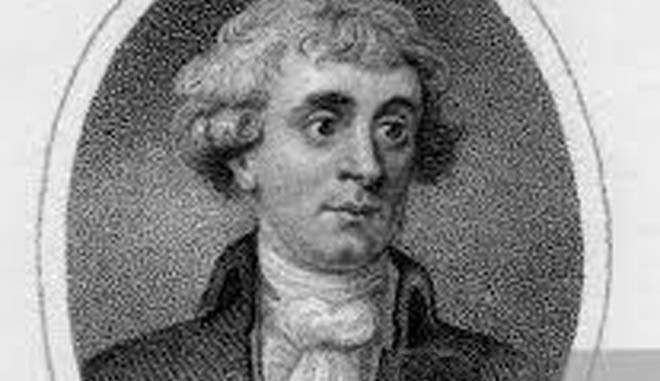

As David Kopf demonstrates, the intellectual milieu in which these historians were raised was conspicuously influenced by 18th-century European Enlightenment. Scholars such as William Jones (1746-1794) and Henry Thomas Colebrooke (1765-1837) were as much a product of Enlightenment ideas as Voltaire and Edward Gibbon. The Orientalists subscribed the Enlightenment view that differences among large aggregates of human beings (for instance between Europeans and Asians) could not be explained by considering nature which remained constant and universal. Rather people’s customs and cultures could be the analytical categories which made them mutually exclusive groups.
Such relativism of historical processes and cultural traditions fructified tolerance and high intellectual regard for non-Europeans.
Early 18th-century Enlightenment struck an uncanny synthesis with the Romantic movement and influences that it cast on the intellectual life of Europe. The overall sensibility accruing out of this synthesis started according an aura of sanctity and positive value to non-European civilizations such as Indian, Egyptian, Persian, Arabic, Chinese and others. Love for the mysterious and the unknown that punctuated the Romantics’ sensibility stirred up fascination among them for distant races, societies and civilizations.
Such was the environment in which a remarkable figure, William Jones, opened his eyes, who to some was the greatest figure in the Orientalist movement.
In his intellectual upbringing, William Jones’s widowed mother Mary Nix played an important role. He lost his father when he was only three. Contrary to his father, who was a known mathematician, the young William Jones was a linguistics prodigy. In addition to his native languages, English and Welsh, he learned Greek, Latin, Persian, Arabic, Hebrew and basics of Chinese writing at a very early age. By the end of his life he had mastered thirteen languages thoroughly and other 28 reasonably well, making him a hyper polyglot par excellence.
He received his instruction from the prestigious institution like Harrow School London, then went to Oxford and graduated in 1768. He did Masters from the same University in 1773. But before that he joined the Middle Temple, London, and studied law for three years, a preliminary to his lifework in India. Financially constrained, he started tutoring, the seven-year old Lord L Thort’s son of Earl Spencer, the forebear of Lady Diana. He was elected as Fellow of the Royal Society on April 13, 1772.
Before coming to Calcutta in 1783, Jones took up several jobs in the judiciary but could not settle down. His unflinching support for American Independence was quite a unique characteristic.
The most luminous feather in Jones’ cap was the establishment of the Asiatic Society of Bengal which he founded in January 1784 with the support of Governor General Warren Hastings. The establishment of the Society was extremely significant. Jones extended the European method of organised scientific research to Indology. Assiduous and unremitting labour bore fruit, an important translation from Sanskrit literature; Bhagwat Gita’s direct translation from Sanskrit was completed by Charles Wilkins under the auspices of the Society. For the first time, translations of significant works such as Hitopadesha, Shakuntala, Gita Govinda and Manusmriti were made available to the Western audience.
Jones’ fascination with India’s ancient history are represented in his eleven annual addresses delivered before the Society; eight on history and one on sciences.
In one of his addresses, Jones claimed the discovery of common origin of the Indo-European family of languages. For him, India’s golden past lay in remote and uncharted period of world history. Ironically, he propounded a number of incredulous theories, for instance, Egyptian priests migrated and settled down in India in pre-historic times, and Chinese were originally Hindus of Kshatriya cast. How did he reach these conclusions is difficult to speculate.
His pronouncement that Sanskrit was cousin to old Persian, Greek, Latin and modern languages of Europe startled his contemporary scholars. Jones’ search for commonality between India and Europe was not confined to language only, he also audaciously advanced a theory of common race. The speakers of the language having common origin must have a common nucleolus race known to us Aryans. Jones’ discovery made the people of northern India kinsmen to Persians and Europeans; he viewed Central Asia a cradle of Indo-European civilization.
In his tenth annual address at the Asiatic Society, on February 28, 1793, Jones underscored the mythology, tales and even dramas were a significant repository of historical facts. To explain the affinities between India and Middle East/Central Asia, Jones employed the method of identification and synchronism. While doing so, he studied the personalities such as Chander Gupta Maurya and Seleukos Nikator, who established the Seleucid Empire over much of the territory in the Near East which Alexander had conquered. Jones’ approach has truly been called "Sheet anchor of Indian History".
Asiatic Society under William Jones became a centre for organised research on Indian antiquities. He made systematic attempt to find and translate old manuscripts and published critical editions of important texts on Indian history and culture. He also wrote on local laws, music, culture, Botany and Geography. On April 27, 1794 at the age of 47, he died in Calcutta and is buried at South Park Street cemetery.
His successor, Henry T Colebrooke spoke disparagingly about him and called him Sanskrit-mad Orientalist. Colebrooke viewed his publications a "repository of nonsense". Having said this, his impact on the intellectual environment of the subcontinent is immense, which merits an in-depth analysis by students of history, politics and literature.